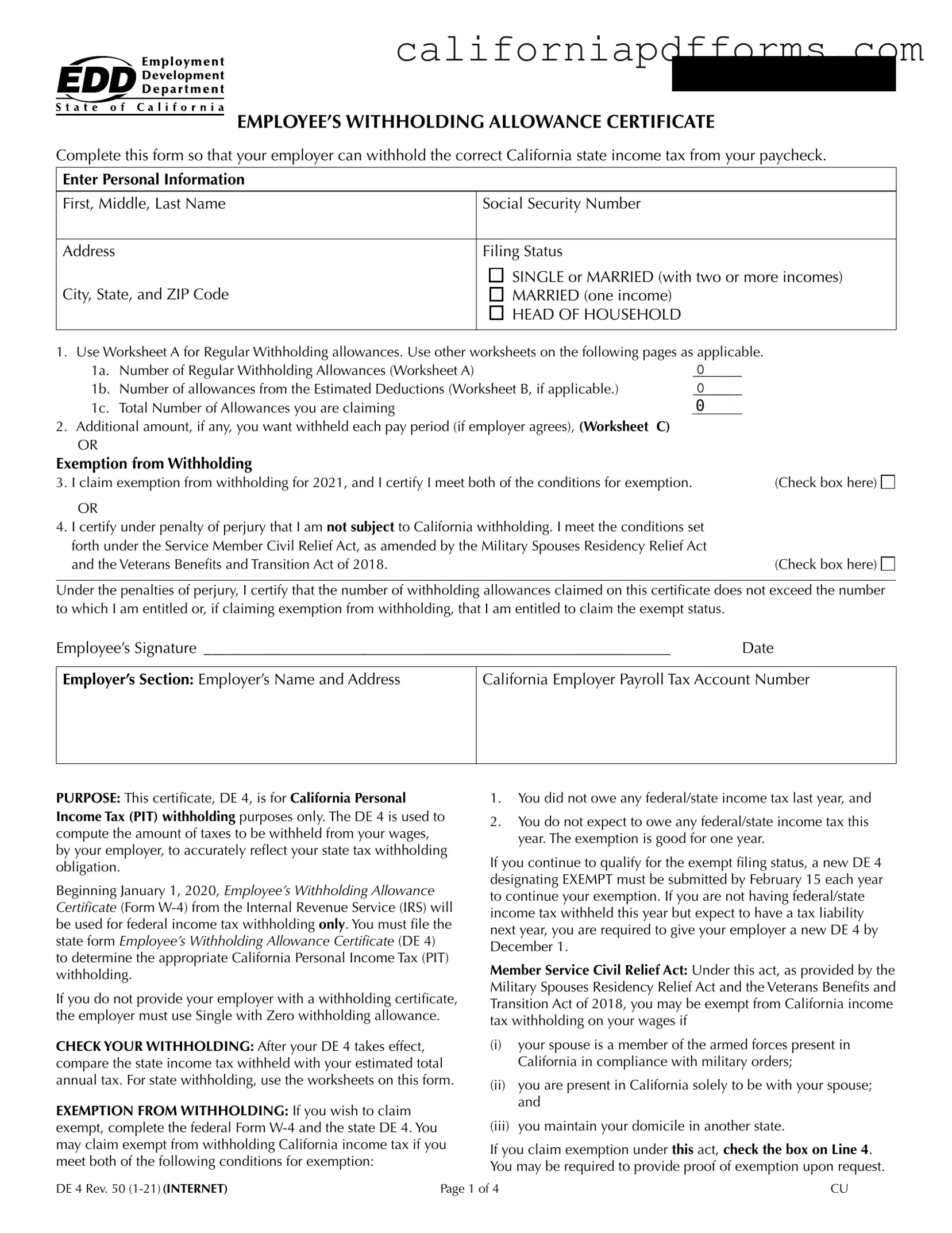Download California De 4 Form
The California DE 4 form, also known as the Employee’s Withholding Allowance Certificate, is essential for determining the correct amount of state income tax to withhold from your paycheck. By filling out this form accurately, you help ensure that your employer withholds the right amount of California state income tax based on your personal situation. Don’t forget to fill out the DE 4 to avoid any surprises during tax season—click the button below to get started!
Open Your Form Online
